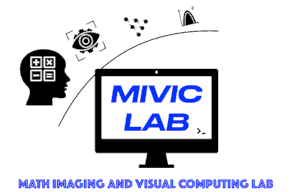| Title | Deep network and multi-atlas segmentation fusion for delineation of thigh muscle groups in three-dimensional water–fat separated MRI |
| Publication Type | Journal Article |
| Year of Publication | 2024 |
| Authors | Annasamudram, NV, Okorie, AM, Spencer, RG, Kalyani, RR, Yang, Q, Landman, BA, Ferrucci, L, Makrogiannis, S |
| Journal | Journal of Medical Imaging |
| Volume | 11 |
| Pagination | 054003 |
| Keywords | muscle groups, segmentation, Thigh, three-dimensional chemical shift encoded water–fat magnetic resonance imaging, tissue quantification |
| Abstract | PurposeSegmentation is essential for tissue quantification and characterization in studies of aging and age-related and metabolic diseases and the development of imaging biomarkers. We propose a multi-method and multi-atlas methodology for automated segmentation of functional muscle groups in three-dimensional (3D) thigh magnetic resonance images. These groups lie anatomically adjacent to each other, rendering their manual delineation a challenging and time-consuming task.ApproachWe introduce a framework for automated segmentation of the four main functional muscle groups of the thigh, gracilis, hamstring, quadriceps femoris, and sartorius, using chemical shift encoded water–fat magnetic resonance imaging (CSE-MRI). We propose fusing anatomical mappings from multiple deformable models with 3D deep learning model–based segmentation. This approach leverages the generalizability of multi-atlas segmentation (MAS) and accuracy of deep networks, hence enabling accurate assessment of volume and fat content of muscle groups.ResultsFor segmentation performance evaluation, we calculated the Dice similarity coefficient (DSC) and Hausdorff distance 95th percentile (HD-95). We evaluated the proposed framework, its variants, and baseline methods on 15 healthy subjects by threefold cross-validation and tested on four patients. Fusion of multiple atlases, deformable registration models, and deep learning segmentation produced the top performance with an average DSC of 0.859 and HD-95 of 8.34 over all muscles.ConclusionsFusion of multiple anatomical mappings from multiple MAS techniques enriches the template set and improves the segmentation accuracy. Additional fusion with deep network decisions applied to the subject space offers complementary information. The proposed approach can produce accurate segmentation of individual muscle groups in 3D thigh MRI scans. |
| URL | https://doi.org/10.1117/1.JMI.11.5.054003 |
| DOI | 10.1117/1.JMI.11.5.054003 |
Deep network and multi-atlas segmentation fusion for delineation of thigh muscle groups in three-dimensional water–fat separated MRI
Submitted by admin on Fri, 09/13/2024 - 09:14
